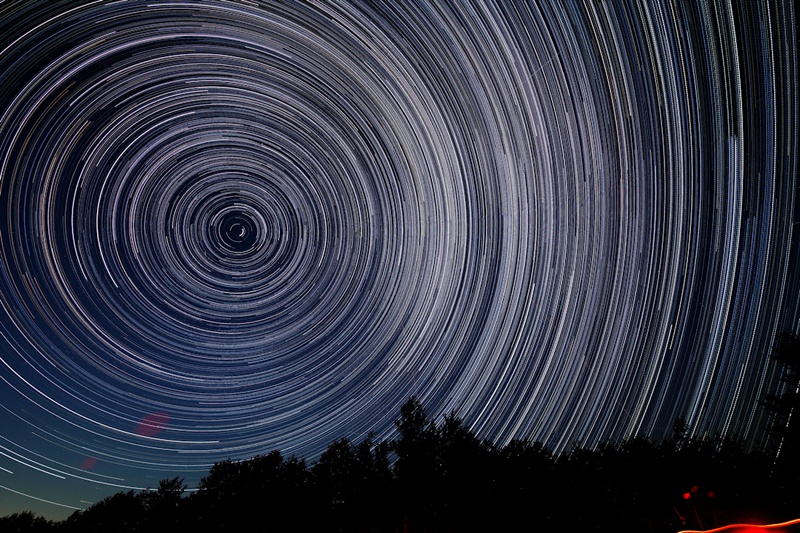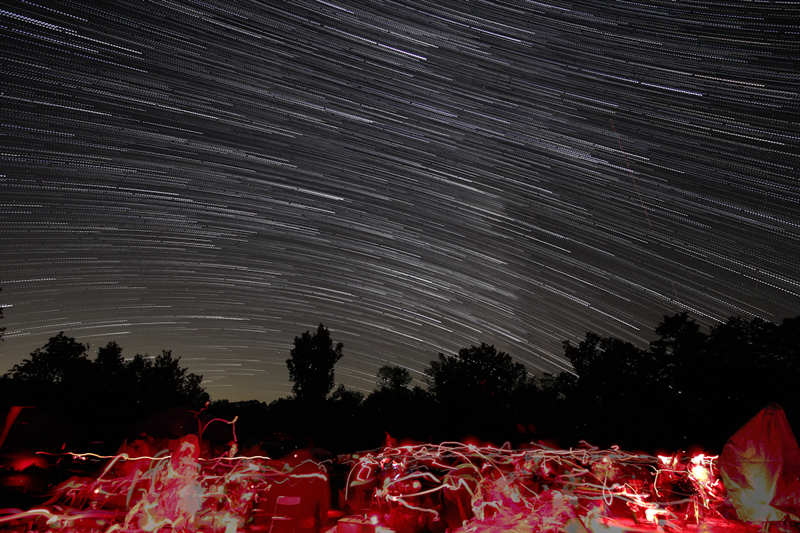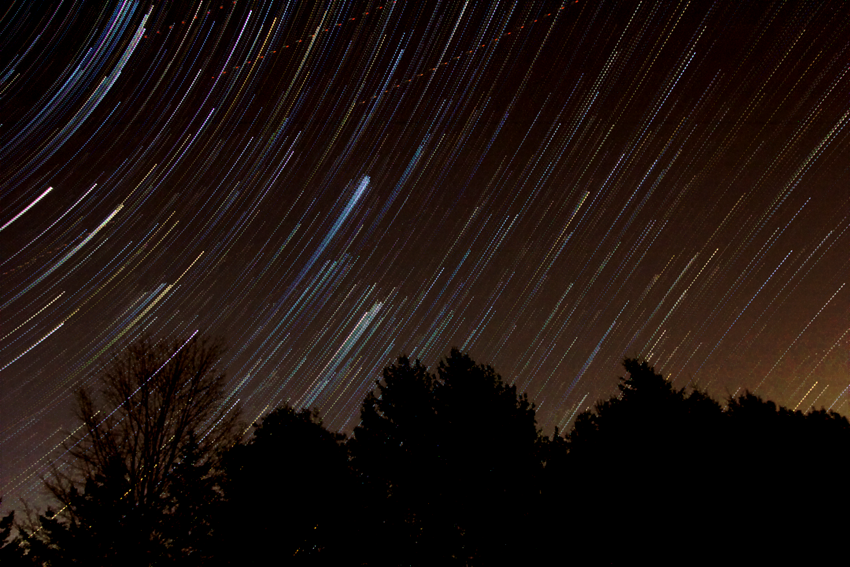Gallery
Editor’s note: I always encourage our members to submit their astronomical images and techniques. In this issue, Dave Noble presents some beautiful and dramatic still images and videos of star trails and time-lapse sequences. (Links to two other videos, of public observing nights at Silver Sands, are available on page 2.) Below, Dave describes the steps that he used to acquire and process his images.
Star Trails and Time-Lapse Videos
By Dave Noble
Soon after I purchased my digital SLR camera, I tried to capture star trails using the same techniques I had used with my old film cameras: open up the aperture to its maximum setting, focus on infinity, and sit back and wait for a few hours as the sensor collected the light from thousands of stars slowly slide by. The longer the exposure, the longer the stars trails would be in the final image, which was after all the goal.
I was shocked to find at the end of a 2 hour test exposure that instead of fine star trails against a dark background, the image from the DSLR showed a pink glowing sky, the result of light pollution and thermal noise from within the camera itself.
Imaging
Imaging star trails with a DSLR requires new techniques: a large number of relatively short exposures overlaid or stacked together to give, more or less, the impression of continuous star trails. An added benefit of taking a long series of photos is the ability to animate the images and create a time-lapse video.
With a little quick math, I discovered that in order to capture star trails covering 4 hours, exposures of 30 seconds would require 480 images. To reduce the number of images, allow the camera time to recycle after each exposure, and to give me an opportunity to clear the lens from dew, I decided to space each 30 second exposure by 1 minute. Skipping 30 seconds between exposures creates a small gap in the star trails. These gaps can be minimized during post processing by adding a blur effect to the final still image. Star trail purists may not like this break between shots. If so, the time between frames must be minimized or reduced greatly. Video playback is unaffected by the intermittent spacing between frames.
The final setting to be adjusted is the ISO sensitivity of the camera. Exposures of the night sky for 30 seconds using fast lenses can capture a fair amount to detail at ISO settings of 800-1600 before chip noise becomes an issue.
For nightscape scenes with activity in the foreground, however, exposures of 30 seconds can be too long to follow the action. In these situations, times must be reduced to single seconds between exposures. Even with higher ISO settings of 1600-3200 to compensate, it will be difficult to capture any but the brightest stars.
Post Processing
As with most astrophotography work, some basic post processing of the images is required to maximize the low brightness levels. With so many frames involved, I decided to use GraphicConverter to automate the adjustments for an entire batches of images.
To create the star trail images, I used StarStax to overlay and combine the series of individual shots and applied a slight blur/fill for dramatic effect.
Finally for video animation, I imported the image sequence into QuickTime v7. The video can then be saved at a variety of playback rates, generally from 15-30 frames per second, in order to create the best fluid motion.
Software
GraphicConverter 9
https://www.lemkesoft.de/en/
StarStaX – Version 0.71
http://www.markus-enzweiler.
QuickTime 7.6.6
Import image sequence and create time lapse video
The image below, aiming at the north polar region, was taken at the 2017 Summer Star Party in Plainfield, Massachusetts. Multiple exposures were also combined into a video that you can watch here.
 Image details: Canon EOS 60D camera, 30-second exposures, f/2.8 10mm ISO 1600
Image details: Canon EOS 60D camera, 30-second exposures, f/2.8 10mm ISO 1600
The image below was also taken at the Summer Star Party, this time facing south. One video shows the stars moving across the sky, and a second video shows emerging star trails as the images are combined.
 Image details: Canon EOS 60D camera, 30-second exposures, f/2.8 10mm ISO 1600
Image details: Canon EOS 60D camera, 30-second exposures, f/2.8 10mm ISO 1600
The image below was taken in New Hampshire over the Thanksgiving weekend. It includes trails of the Pleiades and Hyades rising in the east.
 Image details: Canon EOS 60D, 30-second exposures, f/5.6 14mm ISO 1600
Image details: Canon EOS 60D, 30-second exposures, f/5.6 14mm ISO 1600
